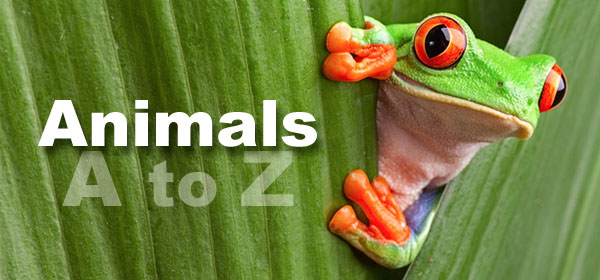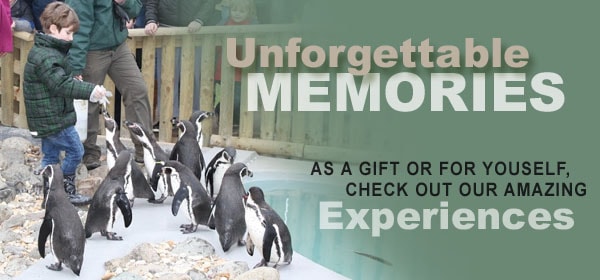After spending many hours working in the Invertebrate House over the last four years, one of the most frequent comments I hear is that the aquatic crayfish tanks are empty and people telling their children not to bother looking in them. Well, I am here to tell you that our crayfish hatchery is rarely empty! In total, there is probably about two days throughout the whole year when all the tanks are empty, which is when the grown-on young are transported back to the location where their mothers were collected from, and the newest babies are bought back to our hatchery.
What is a White-clawed Crayfish and Why do you have a Hatchery Dedicated to them?
The white-clawed crayfish is an endangered species of crayfish and is the only species of crayfish that is native to the UK, usually found living in freshwater streams. Over the years, the introduction of the North American signal crayfish and red swamp crayfish has decimated English native crayfish populations as the signals are much bigger, outcompeting the white claws for food and resources. Along with this, they carry ‘Crayfish Plague’, an easily spread fungus which they themselves are immune to but is deadly to our native white-clawed crayfish.
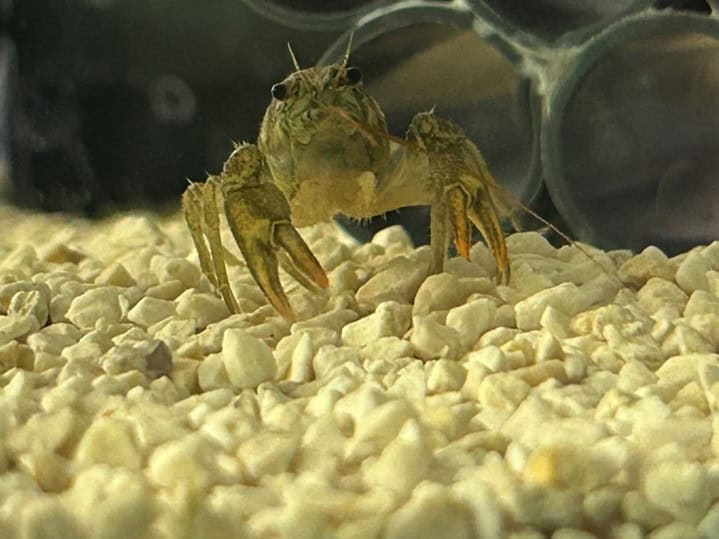
How are we Helping?
You may be wondering why we have the hatchery and how is it helpful for conservation? Well, the first year of a crayfish’s life is the most treacherous. They are super sensitive to disease and predators. We can help with this by collecting up the pregnant mothers, who then birth their young in captivity. We then release the mothers back into the area they came from and keep and raise the young in captivity. Helping higher numbers of young crayfish to survive past the critical stage. The young are then released into the same area their mothers were collected from. The aim being that an increased number of young survive to adulthood, increasing wild populations.
Since our first arrivals at the hatchery in June 2021, we have raised and released over 300 individual crayfish back into the wild! Currently, we have 86 crayfish residents in our hatchery that will be ready to be released later this year!
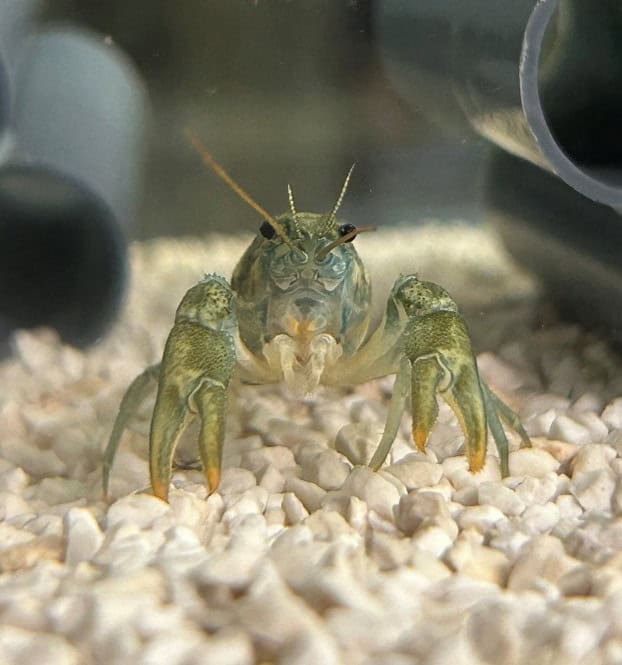
The Hatchery, How Does it Work?
Our bio-secure crayfish hatchery is made up of five different sections totalling 44 different tanks. The water used in these tanks is collected from off-show areas of the park as the system runs solely on rainwater. The rainwater we collect is held in reservoirs in the crayfish room, treated with chemicals and oxygenated to make sure its crayfish-safe. Each tank needs water quality tests taken weekly to make sure there’s nothing bad in the system that would kill the crayfish and to make sure that the calcium and pH levels of the water are high enough for their survival. The room itself has two fans constantly cooling it. Throughout the year the temperature varies from 5-17 degrees Celsius, a sharp contrast to the exotic side of the invertebrate house which averages at about 28 degrees. Each tank has any algae or old moults removed from them daily and each week the tanks undergo a 20% water change. As a bio-secure hatchery, we have foot dips at the entrance and separate equipment for each section of the hatchery to ensure there is no cross contamination.
All but ten of these tanks are currently filled with crayfish. The crayfish themselves range in size. We have 4 larger crayfish housed in the very first tank on the bottom row, these are probably easiest to see due to their size. The bottom row of small tanks and the large top tanks contain a total of 82 crayfish between them.
Beth, how do I know if a tank has a crayfish in? So, each tank with crayfish in must have a hide, these hides look like lengths of tubing glued together.
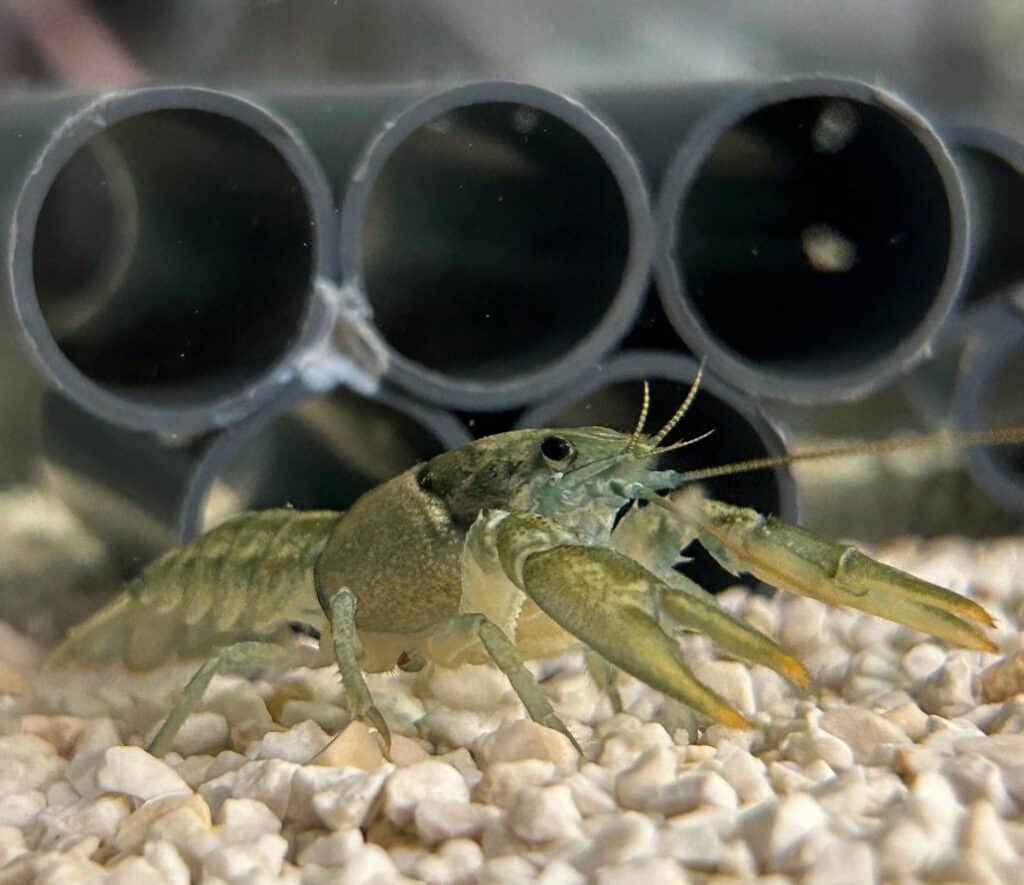
If the crayfish aren’t stomping around the tank waving their chelipeds (claws) around like they just don’t care, then they are probably in these hides.
Personalities?
You may be wondering what its like to look after these crayfish… are they interesting? Do they have personalities?
Although they are not as hands on as other species we work with like our snakes, I’d say working with the crayfish is still very interesting. They are curious creatures who often come to investigate new equipment entering their tanks, or even keepers faces as we peer in for health checks. Usually, they are very active, some may be hidden but usually there is one or more in each tank wondering around investigating bits of weeds or playing with bubbles. Some of them even like to hold onto some of the floating balls you see in the tanks playing with them!
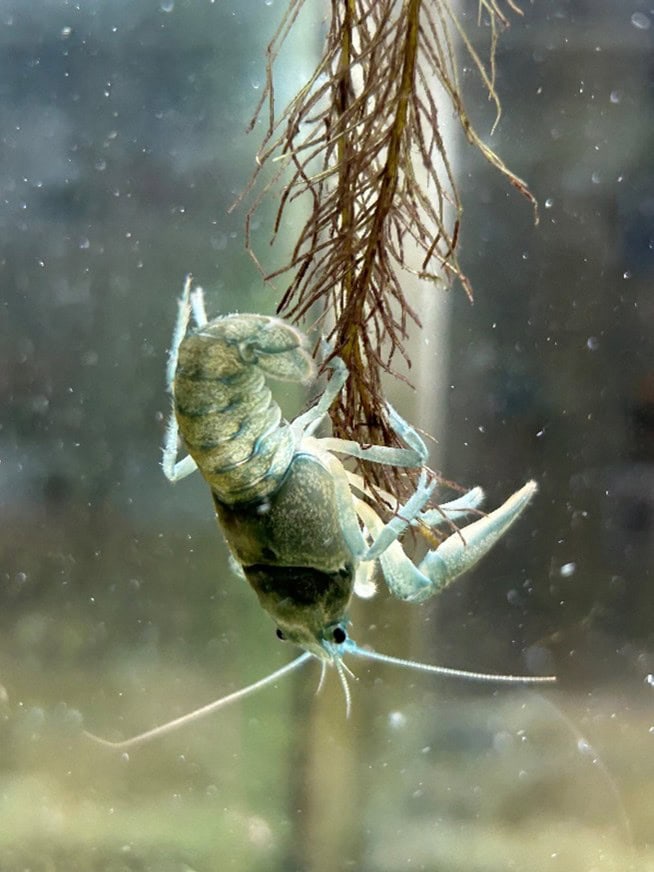
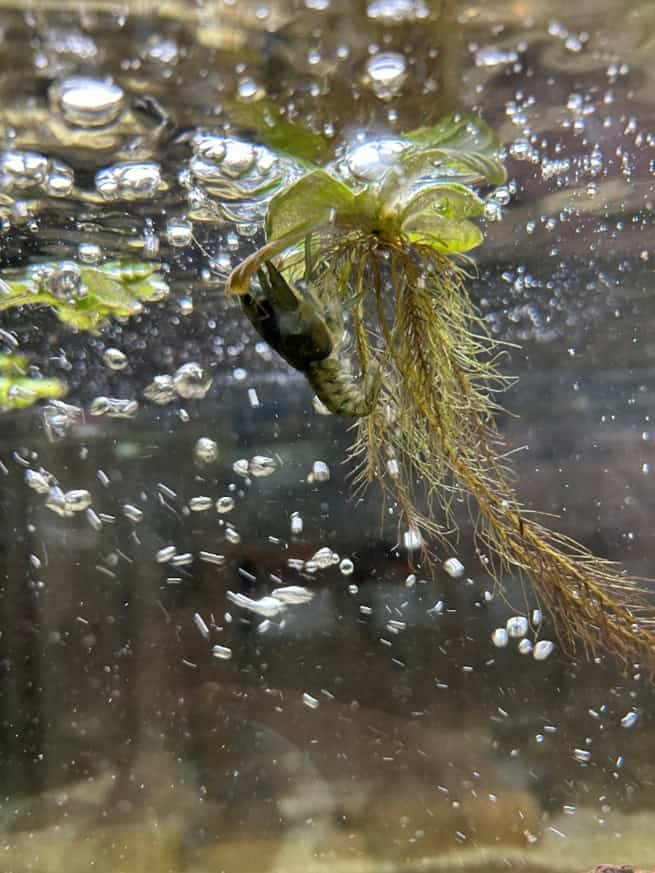
The time we see the most interaction and aggression with these guys is feeding time. They are very food orientated and will often have mini arguments with each other over the tastiest bits of food (don’t worry they don’t hurt each other). As omnivores their diet consists of a variety of aquatic invertebrates and pond weed that we grow on site in another off-show area specifically for making crayfish food. The crayfish tend to know roughly that food comes to them in the afternoon and will wait in feed areas. We try our best to spread the food around the tanks however, the crayfish seem to be able to work out where the food is going to land as they gather into these areas ready to be fed. If you watch them being fed, you will see them waving their claws around catching as much food as they can and then eating it as if they haven’t been fed for 50 years! I can 100000% guarantee they are very well-fed crayfish!
I hope this has been a fun refresher into the lives of the crayfish, their temporary lives in captivity and the importance of the hatchery for conservation! I also hope next time you visit the park you don’t just assume our tanks are empty and you try to look for these cute little guys.
By Beth, Deputy Head of Reptiles & Inverts
